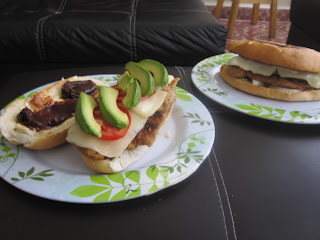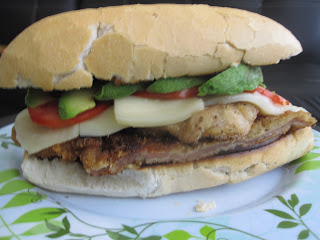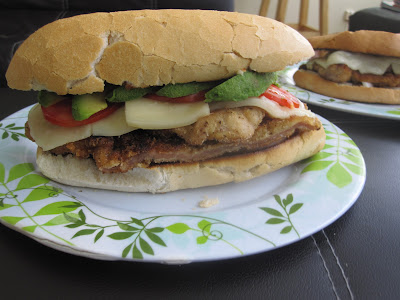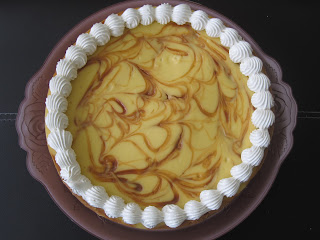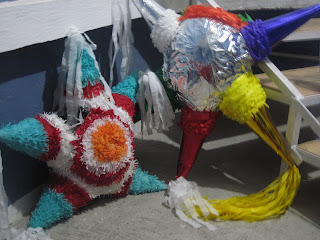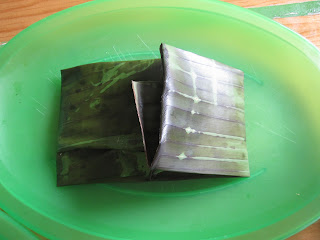
Authentic Mexican
quesadillas - not what you were expecting, are they? Unlike what we generally refer to as
quesadillas in the US, these are exactly the type of
quesadillas that you find handmade from masa and sold by street vendors in Mexico City. (Well, not exactly, I'm still a novice
quesadilla maker, so the ones you buy from professionals will be rounder, more uniform, and quite a bit prettier.)

Of the cheesy
antojitos I've posted about over the past month,
quesadillas are the only ones really considered a meal. The dough is thicker and must be made from the more substantial yellow
masa. In addition to cheese, other fillings like
longaniza (my personal favorite), mushrooms like
huitlacoche (Mexico City's personal favorite), and
picadillo can be stuffed into the folded dough, among other things. Fill the remaining space inside with the usual garnish suspects of lettuce,
crema,
queso fresco and of course salsa, and just two will leave you completely stuffed (although, you will still try to force the third one down, just because it's so delicious).
Ingredients
1 kilo yellow
masa
1 Tbsp. salt
2 cups
queso de hebra, shredded (or any good Mexican melting cheese, grated)
1/2 pound (200 g)
longaniza, cooked and crumbled
oil for frying
salsa verde
shredded lettuce
media crema (or sour cream)
queso fresco, crumbled
Directions
1 - Add the salt to the
masa and knead well, for about 10 minutes, until the dough is smooth and workable.
2 - Divide the
masa into clumps slightly smaller than tennis balls. Roll them into smooth balls with no cracks (like if you were building a snowman with play-doh).
3 - Put the dough in between 2 sheets of plastic (we cut circles out of a ziploc bag, and it works very well for us). Begin to flatten the dough ball and stretch it into a large, flat circle. If you are good, use the palm of your hand; if you want to be faster, just use a rolling pin. In the end, you should have a very large disc of
masa that is about the thickness of a quarter.
4 - Heat the
masa disc on a
comal (or griddle) over low heat for about 2 minutes on each side. You want it to cook, but not get crispy or take on color because it still needs to pliable enough to fold without breaking.
5 - Add about a tablespoon of vegetable oil to a large skillet over low heat.
6 - Once the oil is hot, add the
masa. Cook for about 30 seconds on one side, and then flip it over. Add some cheese,
longaniza, and some more cheese onto one half of the
masa disk and fold the other side over the filling.
7 - Fry over low heat for about 2 - 3 minutes on each side, until the cheese is melted and the
masa begins to take on color.
8 - Drain on a paper towel.
9 - Repeat Steps 3 to 8 until you have no more
masa.
9 - Stuff the inside with the salsa verde, lettuce,
crema, and
queso fresco.
10 - Enjoy!
 Whenever my sister sees ChocoMilk, she texts me about how much the little boy looks like my husband. And while the dark hair, brown eyes, round head, and goofy smile are a dead-on cartoon match, what's inside is even more enjoyable.
Whenever my sister sees ChocoMilk, she texts me about how much the little boy looks like my husband. And while the dark hair, brown eyes, round head, and goofy smile are a dead-on cartoon match, what's inside is even more enjoyable. Though awesome just plain, I've been told bananas and nutella are also popular mix-ins.
Though awesome just plain, I've been told bananas and nutella are also popular mix-ins.













.JPG)









